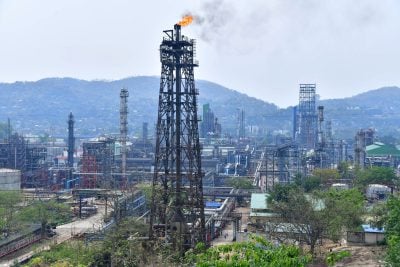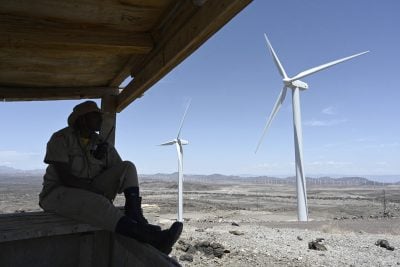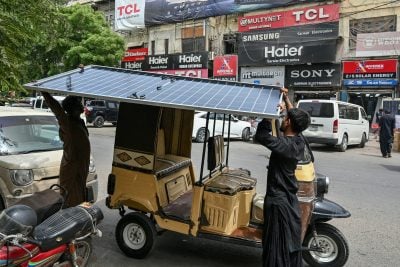Solar energy
The second-most-important renewable energy technology to date is solar PV. Global installed PV generating capacity is expected to increase from 100 GW at the end of 2012 to 210 GW by 2015, suggesting that the technology is quickly catching up wind power in terms of popularity.
Indeed, although it is still more expensive, PV production costs are falling more rapidly than those for wind power. Moreover, while Africa’s wind resources are concentrated in relatively few areas, the continent’s solar resources are spread across most of the continent and rank among the world’s most attractive.
Most PV generating capacity is located on very small projects, often on the roofs of buildings. However, larger schemes that utilise ground-based arrays are becoming increasingly common. For instance, the 15 MW Sheikh Zayed PV plant was completed by Masdar of the United Arab Emirates (UAE) in Mauritania in April, with $32m in funding from the UAE government. The project will increase the country’s generating capacity by 10%.
Mauritania’s President Mohammad Ould Abdul Aziz said: “This new solar power plant not only provides much-needed grid capacity for our people, it also proves that renewable energy can play a major role in the development of our country.” A combination of a long coastline and vast desert territory gives Mauritania an enviable combination of wind and solar resources.
The government of Ghana has been one of the first to introduce feed-in tariffs in Africa. Although substantial new thermal and hydro generating capacity is already under development, Accra is keen to diversify its generation mix and hopes to encourage investment in solar power capacity. UK firm Blue Energy has already announced plans to construct a 155 MW solar PV project in western Ghana, which would be easily the biggest solar power scheme in Africa. First electricity is due by the end of 2015.
One of the biggest restrictions on solar and wind power development in Africa is the need for back-up capacity. Countries with a large proportion of wind power in their generation mixes generally need spare thermal generating capacity that can be brought on stream when required. Most African states do not have sufficient total generating capacity to cope with peak demand and so they do not possess any back-up capacity.
Transforming wind energy
Last month in Cape Town, at the 2013 Innovation Prize for Africa awards, two Tunisians won a $25,000 cheque for an innovation – a bladeless wind converter – which could radically transform what we have come to know as wind energy. It seems to have become universally accepted that the way to transform wind into power was through the conventional propeller system, what we know as traditional turbines.
However for Anis Aouini, who from a young age frequented the beaches on the coast of Tunisia, the most visible example of wind being turned into energy, was that of the sailing boat. Aouini, an engineer who has worked for Schlumberger and other multinationals, set himself the challenge to convert wind into kinetic energy, in the same way boats used a sail to propel themselves forward.
This is when Aouini partnered with childhood friend Hassine Labaied to set up Saphon Energy. Aouini can be considered the inventor and technical officer whilst MBA graduate Labaied brings the business acumen to commercialise what could be a game changer in wind energy. So why the excitement? The technology is novel in that it is ‘bladeless’ and its design means that it will be considerably cheaper and more efficient than the conventional wind turbines.
Cheaper because a bladeless design does not incorporate some of the most expensive components which make up a turbine, and more efficient because a sail captures a bigger portion of the energy from wind. Aouini and Labaied claim that the prototype which they have developed, currently in its fourth stage of development, is half the price of traditional turbines and up to twice as efficient. “An average wind turbine captures 30 to 40% of the wind’s kinetic energy, whilst the Saphonian [their invention] can capture up to 80%, adds Labaied.
So how does it work? The sail, which is in the shape of a large dish, captures the wind and the mechanical movement this generates actions pistons which generate hydraulic energy. This has the added advantage in that it can be converted immediately into electricity or stored in a hydraulic accumulator for when wind levels are low or inexistent.
Labaied estimates that it may take another 12-18 months for the technology to be fully commercialised. Aouini was confident that future generations of the technology would be even more effective than the current crop, and could be applied within a local grid, which is a solution often put forward in Africa, or as part of a larger wind park to feed into a national grid. Watch this space.
Want to continue reading? Subscribe today.
You've read all your free articles for this month! Subscribe now to enjoy full access to our content.
Digital Monthly
£8.00 / month
Receive full unlimited access to our articles, opinions, podcasts and more.
Digital Yearly
£70.00 / year
Our best value offer - save £26 and gain access to all of our digital content for an entire year!

 Sign in with Google
Sign in with Google 




